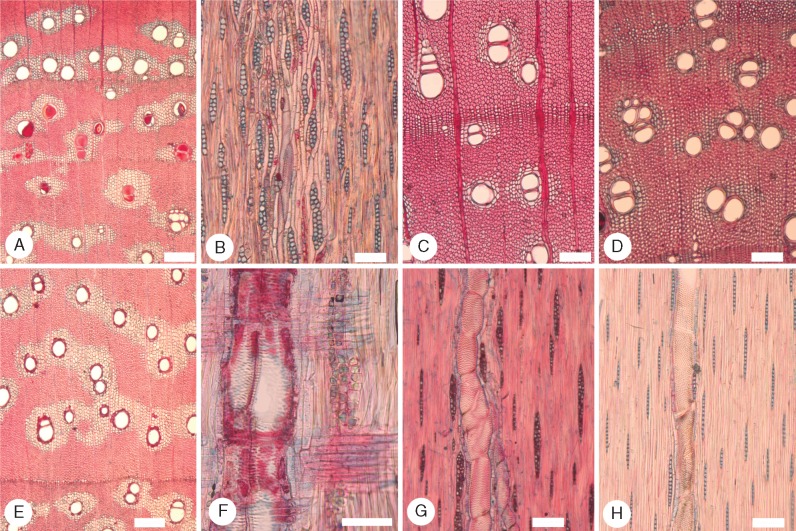Fig. 5.
Species of Acacia sampled in the semi-arid region II. (A and C–E) Transverse sections (TS); (B, G and H) tangential longitudinal sections (TLS); (F) radial longitudinal section (RLS). (A, B, E and F) Acacia stenophylla (Plurinerves) LH38. In (A), some vessels contain gum, whereas in (E), slightly closer to the pith, the axial parenchyma cells immediately surrounding the vessels contain gum. Axial parenchyma is vasicentric, aliform and confluent. In (B) rays are 1–2 cells wide. In (F), axial parenchyma strands with chambered prismatic crystals, homocellular rays. (C and G) Acacia spectabilis (Botrycephalae) LH52. Growth ring boundary well defined. Axial parenchyma vasicentric to aliform, not abundant, fibres gelatinous and very thick walled, rays 1–2 cells wide. (D and H) Acacia venulosa (Plurinerves) LH50. Growth ring boundary well defined, thick- to very thick-walled fibres, rays uniseriate. Scale bars = 200 μm in (A) and (E), 100 μm in (B), (C), (D) and (F–H).

